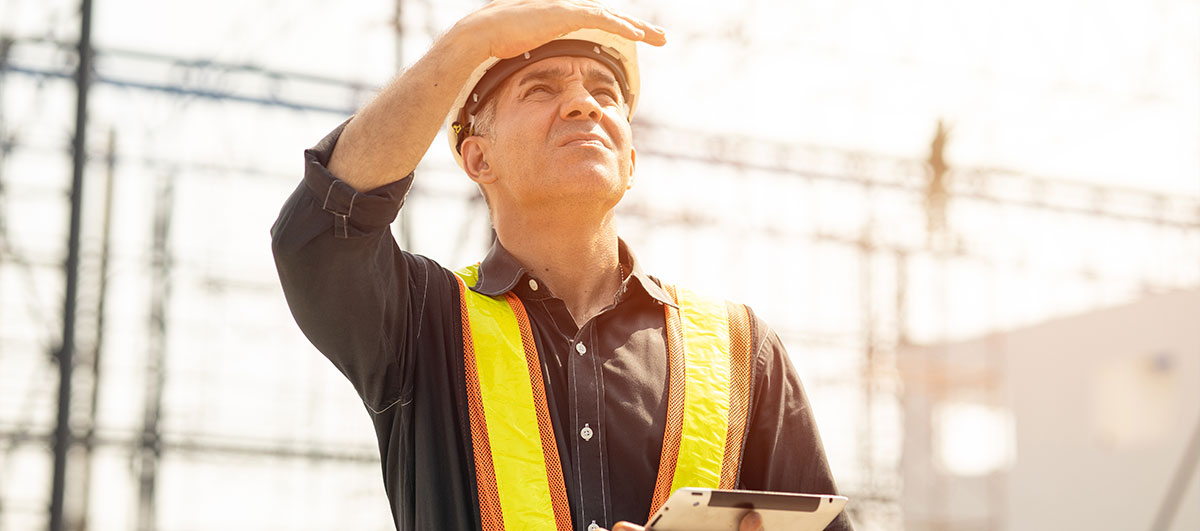Help Your Roof Beat the Heat: Optimizing Temperature Resistance

This summer unleashed scorching temperatures across North America. On July 3rd, we witnessed the record-breaking hottest day ever documented on Earth. As the sweltering heat takes its toll, your commercial facility's cooling expenses may spiral out of control. So, how can you better adapt to these blistering conditions? The solution might be your facility's roof.
How is the Condition of Your Roof Affecting Your Power Bills?
The health and performance of your facility's roof are crucial in protecting against intense summer heat and UV exposure. It plays a vital role in regulating the internal temperature of your entire building. Did you know that wet insulation may lose up to 40% of its original thermal resistance? Roof leaks create a direct pathway for thermal bridging between the interior and exterior of your building. Roofs that are dark in color absorb more solar heat than reflective roofs. Considering that your facility's roof is likely the largest surface area, its performance is of utmost importance for ensuring the energy efficiency of your entire facility.
What Are Some Seasonal Factors Impacting Your Roof?
The summer season may be extra challenging for your facility’s roof because of specific conditions it may bring to your area:
-
1. Storms, hurricanes and monsoons:
- Summer storms can be very violent. Heavy rainfall, strong winds and flying debris may wreak havoc on your commercial roof. Check out this article to learn more about wind uplift. To be prepared, inspect your roof before a storm strikes and address any necessary repairs to ensure its optimal performance during the next storm. After the event, it's essential to check for any potential damage, even if you haven't noticed any active leaks. Also, your roof drains may be clogged with debris that high winds left behind.
-
2. Moisture accumulation:
- High temperatures and humid air subject your roof to significant challenges. The build-up of moisture and condensation may lead to insulation deterioration and mold growth. Aside from compromising your property's integrity, mold can also pose health risks to your employees. Ensuring proper roof drainage and minimizing standing water is crucial in this regard.
-
3. Vegetation:
- Algae and moss thrive during the summer months. Abundant sunlight, humidity and heat provide an ideal habitat. If left unattended, they can grow, trapping moisture and causing long-term decay. Moreover, vegetation that has taken root on your roof may enlarge existing cracks, leading to water intrusion. In certain instances, the presence of vegetation can also create a slipping hazard for anyone accessing the roof. Routine inspections, cleaning and maintenance are vital to prevent vegetation growth.
-
4. Wildfires:
- Unfortunately, the frequency of these devastating events has risen in recent years. Lightweight fire embers can travel considerable distances and ignite new fires when they land on flammable surfaces. If your roof harbors dry vegetation or debris, it can become a potential fire hazard. Keeping your roof clean from flammable items is crucial, particularly in areas subjected to drought. Moreover, embers and ash from wildfires may compromise the integrity of your roof as they can cause burn spots and result in ash buildup within the drain system.
What to do?
Find and repair issues as soon as possible. Start with a free comprehensive roof evaluation to determine where your vulnerabilities are. With a detailed condition report in hand, you will be able to prioritize your roof projects and maximize your remaining budget. Contact us today for a free comprehensive roof evaluation and let’s beat the summer heat together!
Questions? Please reach out at
When you subscribe to the blog, we will send you an e-mail when there are new updates on the site so you wouldn't miss them.
We use cookies to improve your experience on our website. By clicking "I accept" or continuing to use our site, you consent to the use of cookies unless you have disabled them. Learn more here: Privacy Policy and CCPA.
